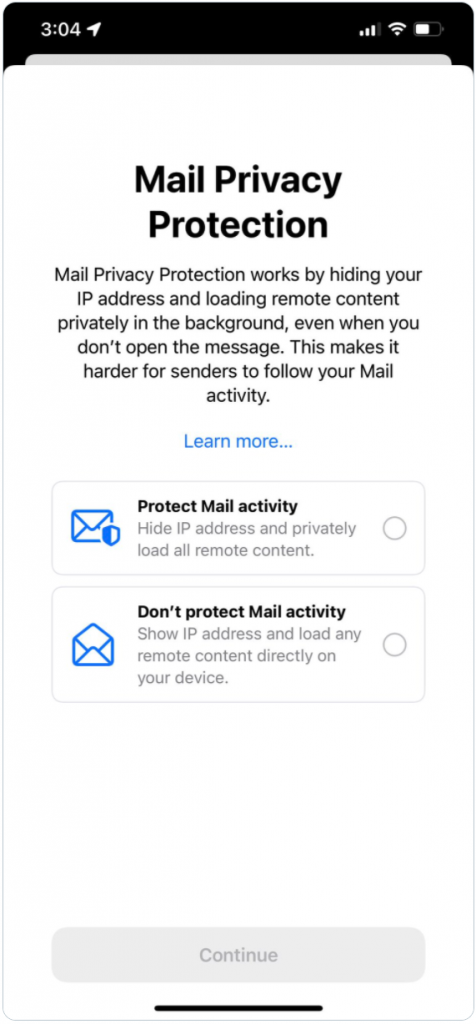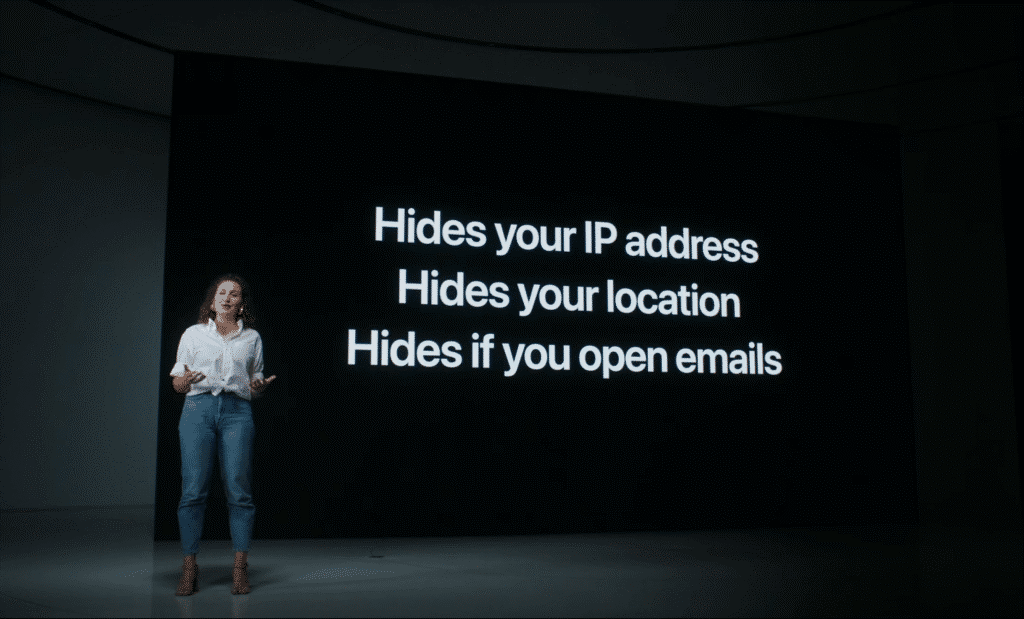In June, Apple announced a new feature for their Mail app on iOS15 – Mail Privacy Protection.
According to Apple:
“Mail Privacy Protection stops senders from using invisible pixels to collect information about the user. [It prevents] senders from knowing when they open an email, and masks their IP address so it can’t be linked to other online activity or used to determine their location.”
How Mail Privacy Protection Works
When a user opens up the Apple Mail app after updating their software to iOS15, they’ll get a message prompting them to either “Protect Mail activity” or “Don’t protect Mail activity.”

Mail Privacy Protection will not be turned on by default – users will have to opt in or out by making a choice. Apple’s App Tracking Transparency tool shows us that there is just a 4% opt-in to ad tracking. Based on these numbers, and the language used by Apple for protecting mail, it is estimated we will see similar low opt-in rates for this email setting.
Before serving an email to a user, Apple will route emails through a proxy server to pre-load message content. This includes tracking pixels which are used to track opens. Regardless of whether a user actually opens or not, an open will be trigged by the way Mail Privacy Protection works.
What Does This Mean for Marketers?
If your audience has a significant amount of Apple Mail users, your open rates will be overinflated with the launch of iOS15.

When it comes to tracking and reporting, you will not be able to see:
- Which Apple Mail recipients open emails
- Open times
- Geolocation data
- Device used to open
As well as being a key performance indicator for email marketing reporting, the open rate is also used for a number of email related activities.
Evaluate Your Current Email Marketing Activities
Make sure you audit your current activity, especially where you are relying on opens for reporting or automated triggers.
Automated nurture flow triggers – are any of your triggers based on opens? These will need to be re-worked.
Segmentation for re-engagement campaigns – are you using opens as a way of pulling unengaged contacts? Consider other metrics such as the last click, last purchase or browse. Also review your copy in re-engagement campaigns for wording such as “it has been a while since you last opened an email”.
Send time optimisation – many ESPs allow you to select the best send time for your audience based on open rate data (amongst other data). Again, this data will be inaccurate. Re-work campaigns that use AI features to send emails at the most optimal send time.
Content localisation – are you using content that is pulled from geolocation data? If you use IP data to identify geolocation for your users and then use this within email (e.g., your nearest store), this could again be inaccurate.
Identifying A/B test winners – consider switching to click rates for determining split test winners, rather than relying on open rates.
Broaden Your Email Metrics and Reporting
If open rates are a big focus in your reporting, now is the time to broaden your email marketing analytics. Focus on other available KPIs, such as click to open rates, click rates against delivered emails, and other cross-channel metrics which show audience engagement such as browse behaviour or orders placed.
To find out how we can help, why not give Coast Digital a call on 0845 450 2086. Our specialists are experienced in helping clients to find the true value of campaigns, getting them well on the way to meeting their business goals.
